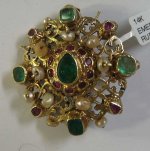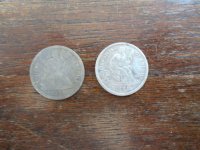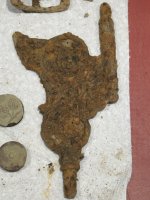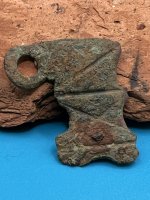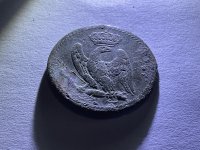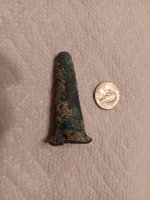as the story goes that this is suppose to be a "treasure item" from a undisclosed wreck ..
Can Anyone put a date on this .. labled as 14kt , yet tests as 18Kt, no marks, minor old repairs, not real high grade stones.
Any Idea of a value (about 17grams)
Can Anyone put a date on this .. labled as 14kt , yet tests as 18Kt, no marks, minor old repairs, not real high grade stones.
Any Idea of a value (about 17grams)


